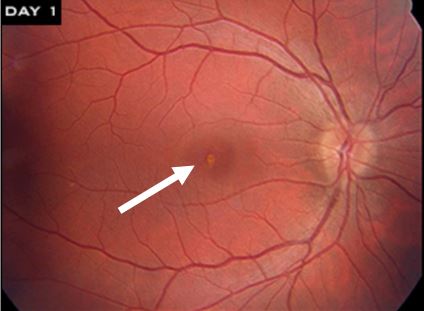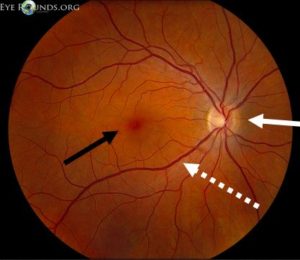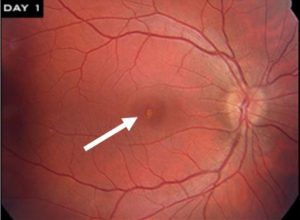
It may be tempting to take a peek at the August 21 eclipse without eye protection. After all, we are told it’s a once-in-a-lifetime event. However, a University of Louisville ophthalmologist says that even just a peek could leave you with a not-so-pleasant, permanent reminder of the day.
“You may have heard that you can do a lot of damage to your eyes when viewing an eclipse, and it’s true,” said Mark Mugavin, MD, MPH, of the UofL Department of Ophthalmology and Visual Sciences. “During an eclipse, our normal reflexes that protect us from sun damage, such as blinking and pupil constriction, are more relaxed because the sun’s light intensity is significantly reduced.”
During the August 21 total eclipse, the moon will directly block all or part of the sun for up to three hours and will be visible across the United States. The “Path of Totality,” in which the entire sun will be covered, cuts across the southwest corner of Kentucky, but does not include the Louisville area.
“At no point should solar filter glasses be removed when you are looking at the eclipse in Louisville,” said Patrick A. Scott OD, PhD, assistant professor in the UofL Department of Ophthalmology & Visual Sciences. “Although the sun may appear completely blocked, observers in Louisville will still be exposed to the sun’s harmful rays, which can cause damage to the eyelids, ocular surface and internal structures of the eye.”
Looking directly into the sun causes a condition known as “solar retinopathy.” The increased UV light exposure creates toxic-free radicals that damage the photoreceptors and specialized pigment of the eye. This damage can leave a person with a mild to moderate reduction in vision, as well as central blind spots. Those most at risk for solar retinopathy are younger people, those with an intraocular lens implanted after cataract surgery and patients who are on photosensitive drugs such as tetracycline and amiodarone. Even though the Louisville area will see approximately 96 percent of the sun blocked, the remaining 4 percent can cause damage.
“The UofL Department of Ophthalmology sees approximately 10 cases a year of patients with solar retinopathy from high intensity laser pointers or high intensity sunlight exposure, such as viewing an eclipse,” Mugavin said, adding that he expects more cases this summer from people viewing the eclipse without proper eye protection.
There is no treatment available for solar retinopathy so the best strategy is to avoid it.
To safely view the eclipse, use glasses with special purpose solar filters. The National Aeronautics and Space Administration (NASA) website reviews the various “eclipse glasses” that are available. Approved glasses should meet the ISO 12312-2 international standard and be manufactured by a U.S. manufacturer.


































